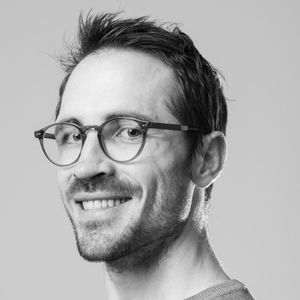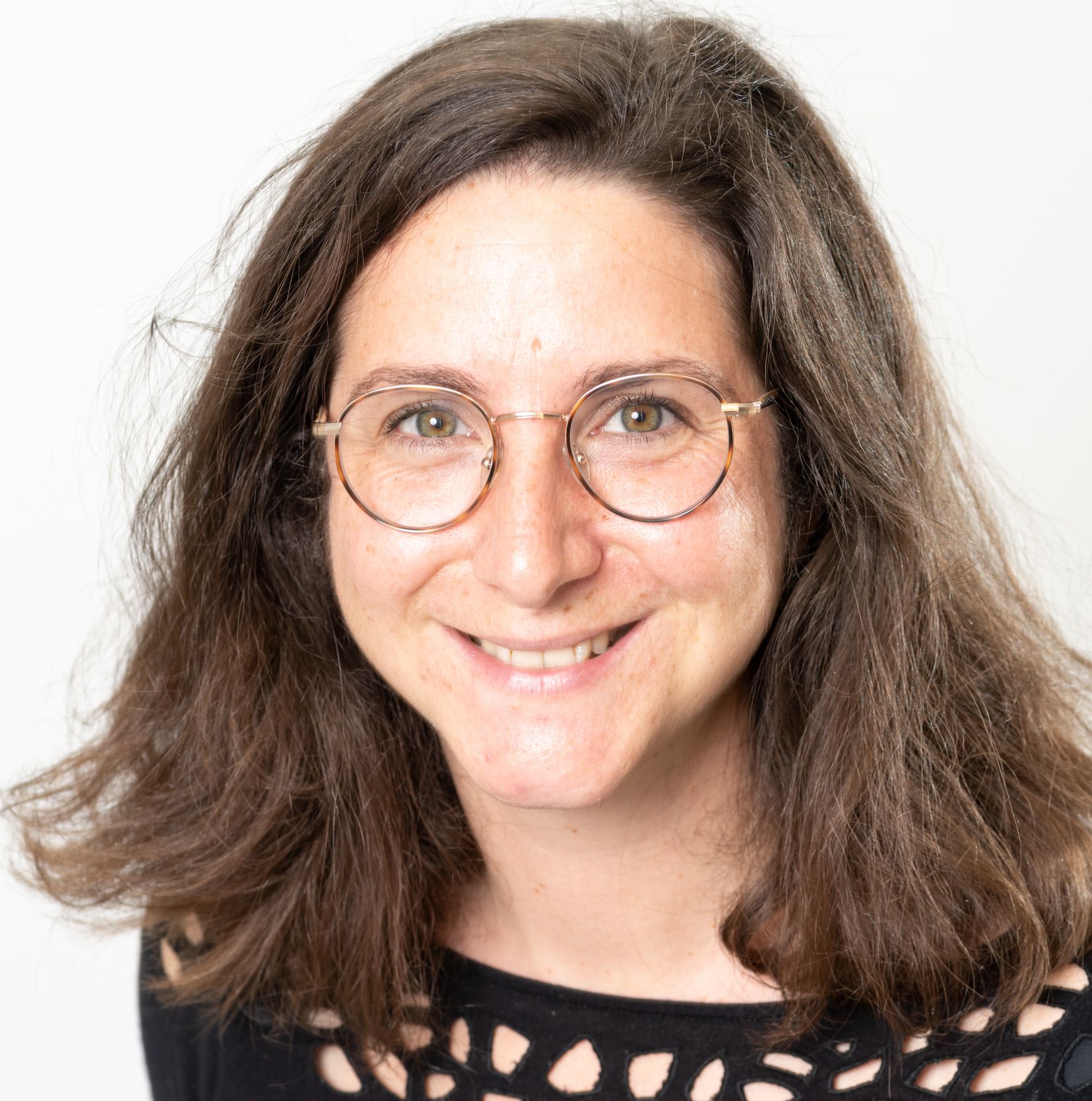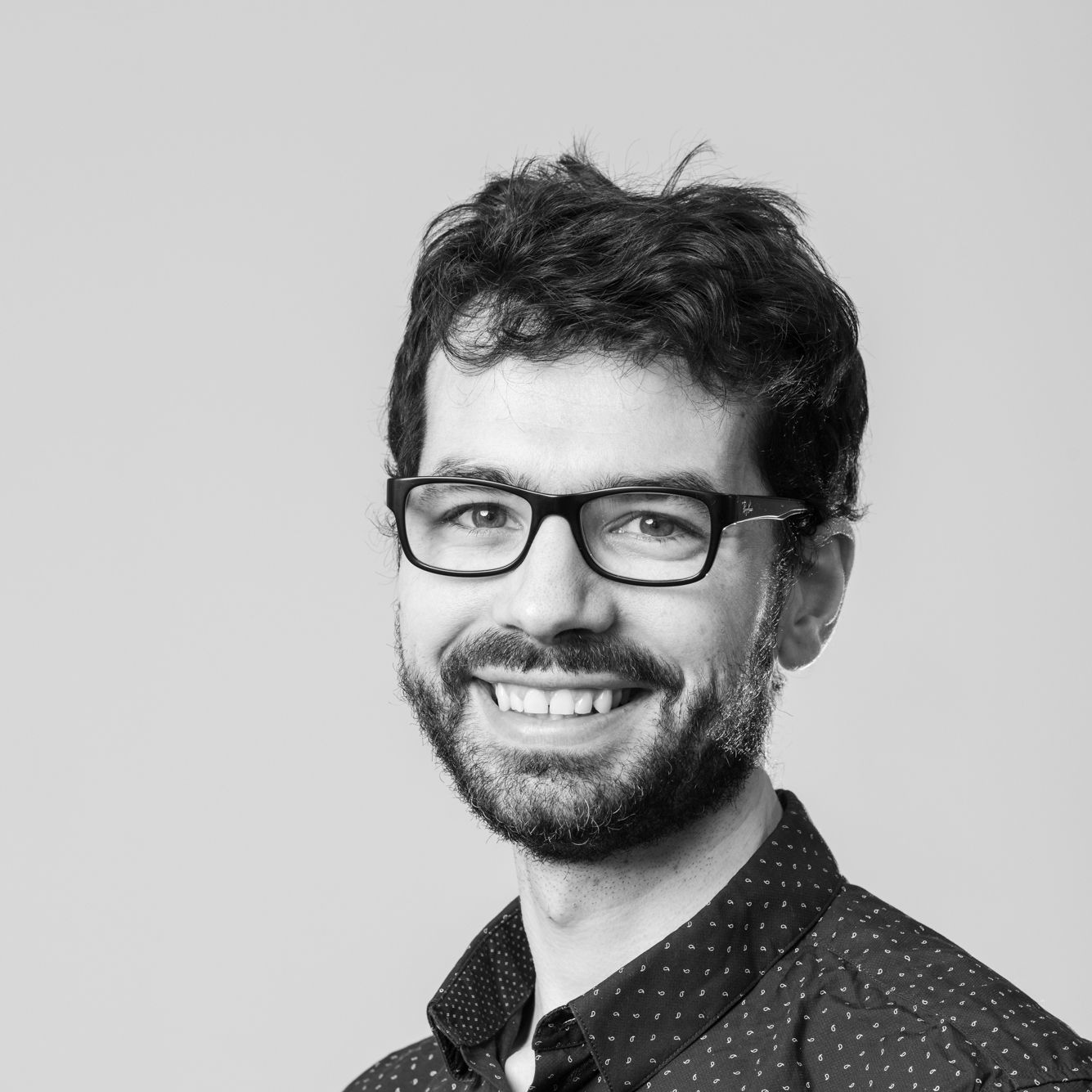Let's start with a story
Jerry Uelsmann was a teacher leading a "Beginning photography" class at the University of Florida. He was willing to experiment with various teaching methods and one day he decided to split his students into two groups with two different approaches:
- the first group had to make 100 different pictures during these 6 months, their quality did not matter, only the quantity did.
- the second group had to present only on a single picture but they would be rated on the quality of this photo.
At the end of this 6-month course, he was surprised to see that the best photos were taken by the group who had to take 100 pictures, even though quality was absolutely not a criteria for them.
He wanted to understand why and talked with his students.
It turns out the students in the first group were very busy during the semester taking pictures, experimenting with light, distance, framing, blur, etc. The quality of the first pictures was not good but they learnt from their mistakes and improved picture after picture to finally reach great photographer skills.
The second group took a more theoretical approach, learning a lot in books/online, making assumptions about what would make a perfect photo. They took several pictures but far less than what the first group did, so they did not really had the occasion to master their craft.
I guess we all have experimented our own version of this experience, which was described in the book Art and Fear by David Bayles and Ted Orland.
If you want to become Jet Li, reading books about kung fu will only get you that far.
You need to practice. A lot.
The good news is that practicing a lot will also have another positive outcome...
Regular contacts with users make better products
In their experience coaching many product teams, Jared M. Spool and his team found that the best product teams have at least 2 hours of customer exposure every 6 weeks (for every team member).
It sounds obvious, but the more frequently you talk to your users, the more frequently you will be able to test your current hypotheses and refine them.
In short, having regular user interviews will not only make you better at it, but will also increase the impact of your product team.
These 2 hours every 6 weeks are equivalent to 20 minutes of customer exposure per week.
Seems reasonable, right?
Unfortunately, only a minority of product teams do it.
Which brings me to my next point...
What's preventing you from getting started?
If you're like most product teams you're doing user interviews now and then, only when starting a discovery on a new subject — so probably not enough.
If you're working in a company which does not yet understand the importance of talking to users, you might even not talk to them at all. 🙈
Here are the most common excuses I hear for not talking regularly to users:
"Executives feels like it's a waste of time"
If user interviews are not a common practice in your company, instead of wasting your time trying to explain the benefits, just do it.
Try doing only one 30-minute user interview every week. That way it won't have an impact on your current topics but it will allow you to progressively gather insights.
The day when you're able to use them to take product decision, it should become much easier to demonstrate the value of these user interviews.
"I am too busy doing the delivery job"
It's like you were driving a car on a road you don't know, and don't want to stop to look at the map because you're too busy driving 🤯
It's your responsibility as a product team to talk to your users, just do it.
"I talk to them only in discovery phase and this is enough"
How long did you have to wait to arrange these discovery interviews? Unless you have a great user recruiting process, it might have taken you 2 to 3 weeks to get these interviews planned. This is probably the limiting factor that could help speed up your discovery process.
And it's not just a matter of discovery speed.
Having regular contacts with your users after your initial discovery will help you refine more granular hypotheses, test your design, receive feedback faster on your beta, etc.
In short, keeping regular users contacts will speed up your discovery phase and maximize your chances of bringing real value to your users.
"It's too painful to organize"
This one is a fair point. If you're manually reaching out to your users and arranging interviews, I can understand it is painful and time consuming for you.
So I invite you to think about ways to automate this process.
I'll describe below what we tried out at PayFit — and there are surely other ways.
"Honestly, I'm not just confortable doing it"
If you never did user interviews before I understand that it might be intimidating at first. And honestly, there is no secret weapon, the more you think about it, the more you will focus on your apprehensions. Try doing one, without over thinking it. I bet the next ones will be easier.
If you're not confortable yet with the basics of users interviews, try reading Rob Fitzpatrick's "The Mom Test" first. It will teach you all you need to know to get started.
What we tried out at PayFit
At PayFit, we have been trying several approaches to get regular discussions with our users.
Step 1: Start manually 🚶
We started by identifying specific customer segments based on what we wanted to learn and then reach out manually & progressively to these users.
For instance, we wanted to better understand why a part of our product was not as used as expected so we identified all users that did not use that part of the product in the last 6 months and reached out to them.
Each week we would contact 5 users so that, in average, one of them would book a slot with us (we used Calendly in our emails so users could directly choose the time & day that worked for us).
It allowed us to gather feedbacks in a continuous way on the various limitations of our product and use them to feed our reflexions.
Step 2: Automation 🚀
Even though sending 5 emails every week wasn't too painful, after 2 quarters, we looked for ways to streamline our recruiting process.
We tried 2 things:
1️⃣ In-app booking
We created ways to give unsatisfied users the possibility to book meetings directly with us (still using Calendly).
Here is an example in image:

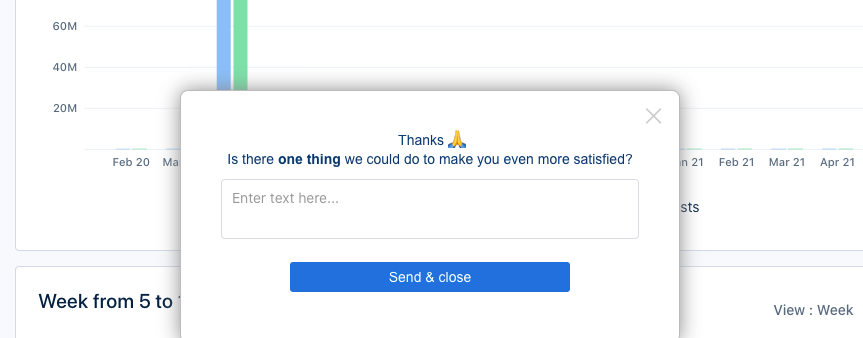
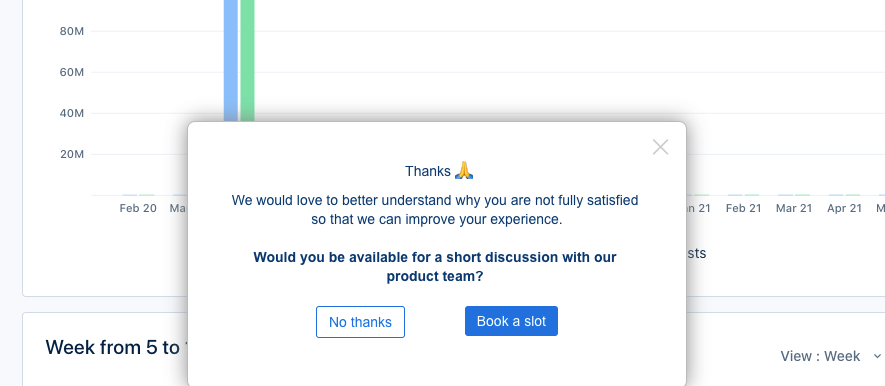
Another example:
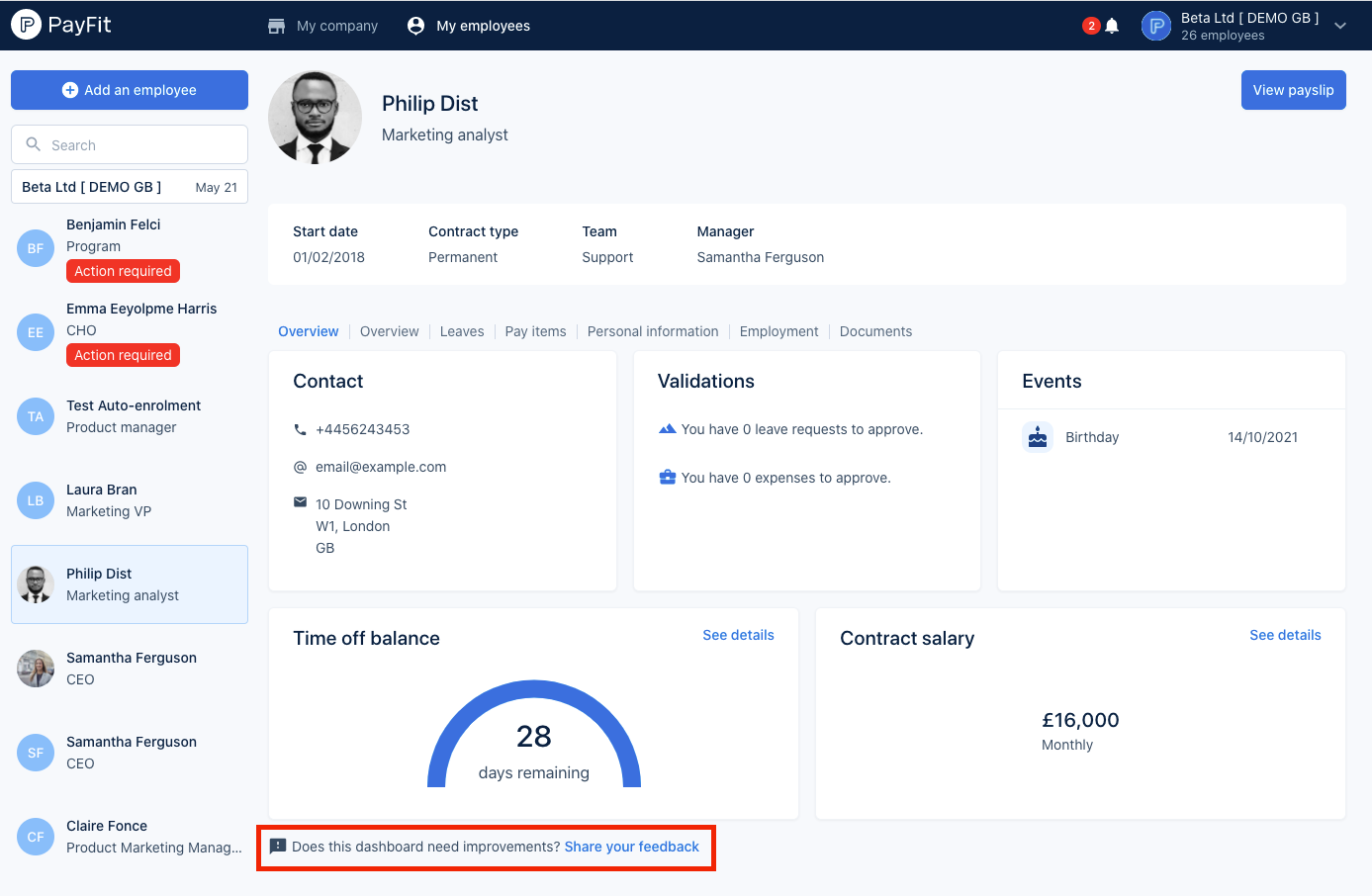
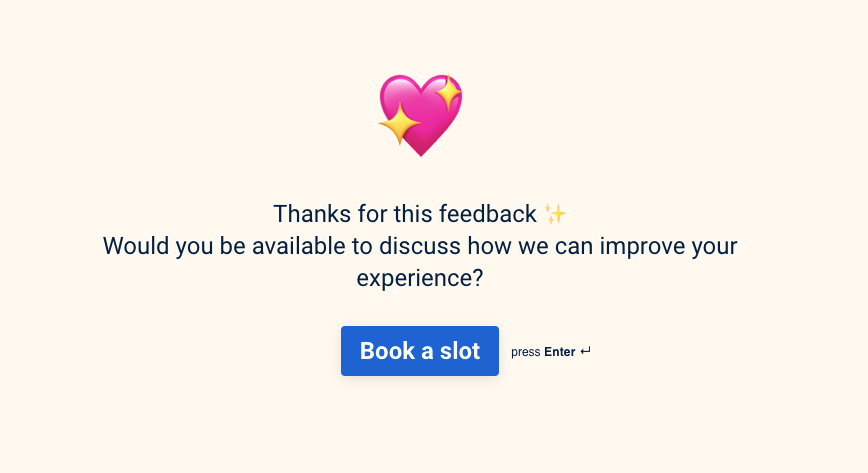
2️⃣ Customer success collaboration
We regularly send in-app NPS survey to our customers. If a customer turns out to be a detractor, our customer success team will systematically reach out to them to better understand why.
What we agreed upon with them is that, if the reason for being a detractor seems related to the product, they will book the customer meeting in an agenda that is shared with the product team so that PM, designers and engineers are free to join.

📖 Learnings
Thanks to these approaches, we did 34 interviews in the last 6 months and we managed to get to a point where we speak to our users at least once per week.
It allowed us to identify effortlessly some very interesting insights:
- What are the triggers pushing customers to look for a real HR product? Their key decision criteria in the buying process?
- What are the main problems our users are facing that are currently not addressed by the product?
- Why some of our features were not used?
- What type of guidance was missing so that users get full benefits from existing features?
- Etc.
Our approach is far from perfect, we will keep improving & refining it over time.
Some companies certainly have much better processes & tools to get regular exposition to customers.
But one thing is sure: we have made tremendous progress over the last quarters in the way we understand our users and we already feel the benefits of it.
So what?
This article will become totally obsolete by the time we managed to do like Neo in Matrix and absorb in a single session all we need to know about our users.

In the meantime, if you want to become a kick-ass user interviewer and increase your product team's impact, don't overthink it, don't over-prepare, just get started and practice!
by Michel Ferry, Product Director at PayFit.
